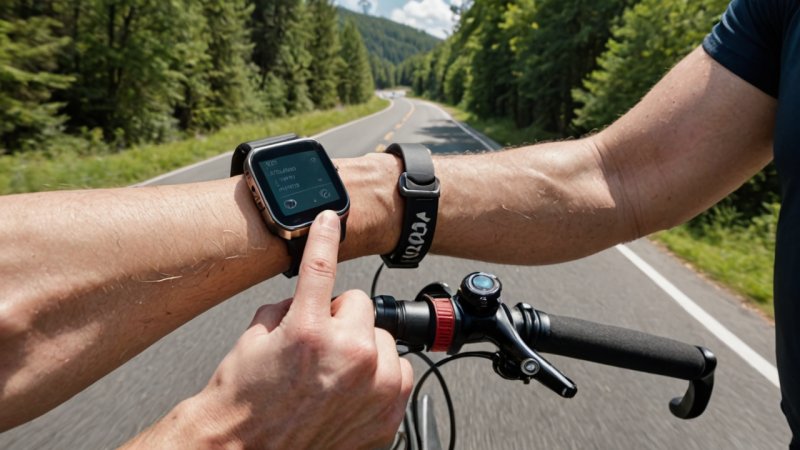In the modern era of cycling, technology has transformed the way cyclists track their progress and optimize their performance. No longer are cyclists solely reliant on their instincts and manual record-keeping. With the advent of advanced devices and applications, tracking metrics such as speed, distance, heart rate, and even GPS locations has become seamless and efficient. This article delves into the various technologies available to cyclists, how to effectively utilize them, and offers insights into improving cycling performance while ensuring safety.
The Evolution of Cycling Technology
The evolution of technology in cycling can be traced back to simple mechanical innovations like gears and brakes, but the digital revolution has introduced a plethora of gadgets and software solutions that provide real-time feedback and analytics. This remarkable shift not only enhances the cycling experience but also plays a crucial role in safety, allowing cyclists to be more aware of their surroundings and performance levels.
Understanding Cycling Metrics
Before diving into the gadgets, it's essential to understand the key metrics that cyclists should focus on:
- Speed: The pace at which a cyclist travels, usually measured in miles per hour (MPH) or kilometers per hour (KPH).
- Distance: The total length of the ride, often tracked via GPS.
- Heart Rate: A vital sign that indicates how hard the heart is working during exercise.
- Cadence: The number of pedal revolutions per minute (RPM), which helps assess cycling efficiency.
- Power Output: Measured in watts, this indicates the physical effort exerted while cycling.
Essential Cycling Technology
Numerous devices and applications can assist cyclists in tracking their progress effectively. Here’s an overview of some essential technology tools:
1. Cycling Computers
Cycling computers are a staple for serious cyclists. These devices attach to the handlebars and display various metrics, including speed, distance, and sometimes even heart rate. Advanced models feature GPS capabilities that allow for route mapping and elevation tracking.
2. Smartwatches and Fitness Trackers
Smartwatches and fitness trackers have become increasingly popular among cyclists. Devices from brands like Garmin, Polar, and Fitbit can track heart rate, calories burned, and even provide insights into recovery time. Many of these devices sync with mobile apps for a comprehensive view of cycling stats.
3. Mobile Applications
Smartphone applications like Strava, MapMyRide, and Komoot have revolutionized how cyclists log their rides. These apps offer community features, route planning, and the ability to analyze performance over time. They can also connect with wearable devices for a consolidated data overview.
4. Power Meters
For performance-focused cyclists, power meters provide critical data regarding power output. This device measures the wattage being produced while pedaling, allowing cyclists to train more effectively by monitoring their efforts during rides.
5. Heart Rate Monitors
Heart rate monitors can help cyclists maintain their training zones. These devices can be worn on the wrist or chest and provide real-time feedback on heart rate, which is essential for optimizing training and ensuring safety during intense rides.
Integrating Technology into Your Cycling Routine
To maximize the benefits of cycling technology, cyclists should integrate these tools into their regular training routines. Here are some tips on how to do this effectively:
1. Set Clear Goals
Before utilizing technology, cyclists should define what they want to achieve. It could be improving speed, increasing distance, or tracking heart rate during rides. Clear goals will help dictate which metrics to focus on.
2. Regularly Analyze Data
After each ride, take time to analyze the collected data. Look for patterns, such as how different terrains affect speed and heart rate. This analysis can inform future training sessions and adjustments to your routine.
3. Join Online Communities
Utilizing apps with community features can enhance motivation. Engage with fellow cyclists to share experiences, challenges, and successes. This camaraderie can provide encouragement and accountability.
4. Prioritize Safety
While technology can enhance performance, safety should always be paramount. Use GPS features to track routes and share locations with friends or family, especially when cycling in unfamiliar areas. Always wear appropriate protective gear and be aware of your surroundings.
Safety Equipment for Cyclists
As much as technology can improve performance, it is equally important to prioritize safety while cycling. Here are some essential safety equipment recommendations:
1. Helmets
A quality helmet is a must for any cyclist. Look for helmets with proper ventilation, fit, and impact resistance. Some advanced helmets even come equipped with sensors that can detect impacts and alert emergency contacts.
2. Reflective Gear
Visibility is crucial, especially during low-light conditions. Wearing reflective clothing and using lights can significantly increase your visibility to drivers and other cyclists.
3. Protective Eyewear
Protective eyewear can shield your eyes from debris and UV rays. Opt for sunglasses with interchangeable lenses for varying light conditions.
4. Cycling Gloves
Gloves can provide a better grip on the handlebars and help reduce fatigue during long rides. They also offer protection in case of falls.
Future Trends in Cycling Technology
The landscape of cycling technology is continually evolving. Here are some anticipated trends that may shape the future of cycling:
1. Enhanced Wearable Technology
Future wearables may become even more advanced, with features that provide real-time biomechanical feedback, helping cyclists optimize their performance and reduce the risk of injury.
2. Smart Clothing
Smart clothing embedded with sensors could monitor vital signs and performance metrics without the need for additional devices, making it easier for cyclists to track their health.
3. AI and Data Analysis
Artificial intelligence may play a significant role in analyzing cycling data, offering personalized training recommendations based on an individual’s performance and health metrics.
Conclusion
Technology has become an integral part of cycling, offering cyclists the tools necessary to track their progress, optimize their performance, and ensure safety during rides. By understanding essential metrics, utilizing advanced devices, and integrating technology into training routines, cyclists can significantly enhance their cycling experience. As technology continues to evolve, it promises to provide even more innovative solutions for cyclists, making the sport safer and more enjoyable for all.






